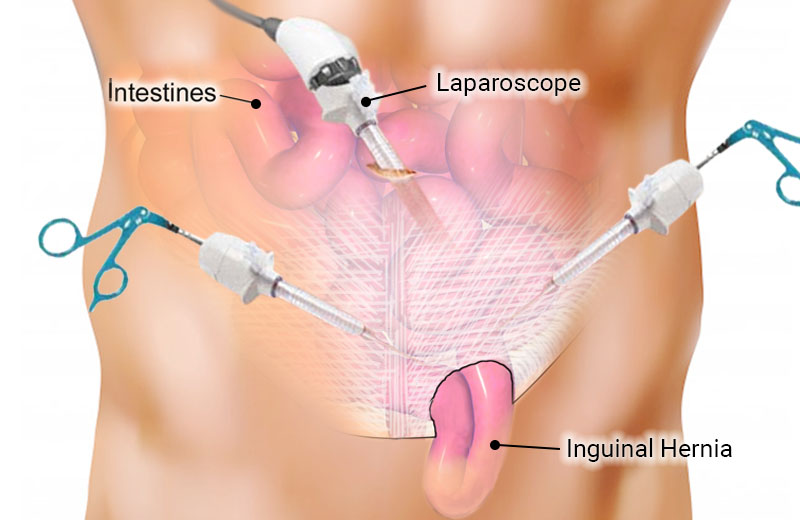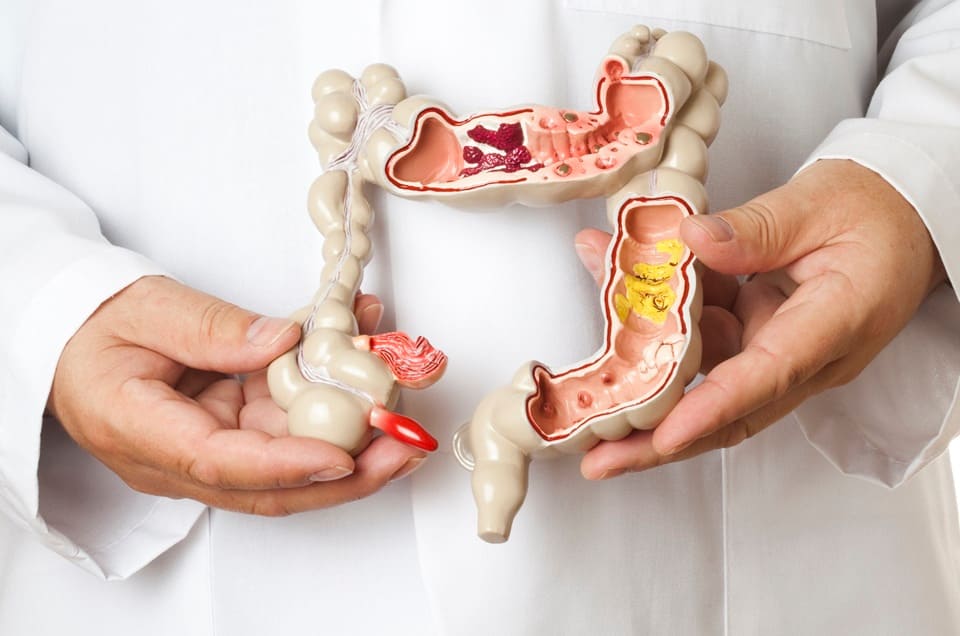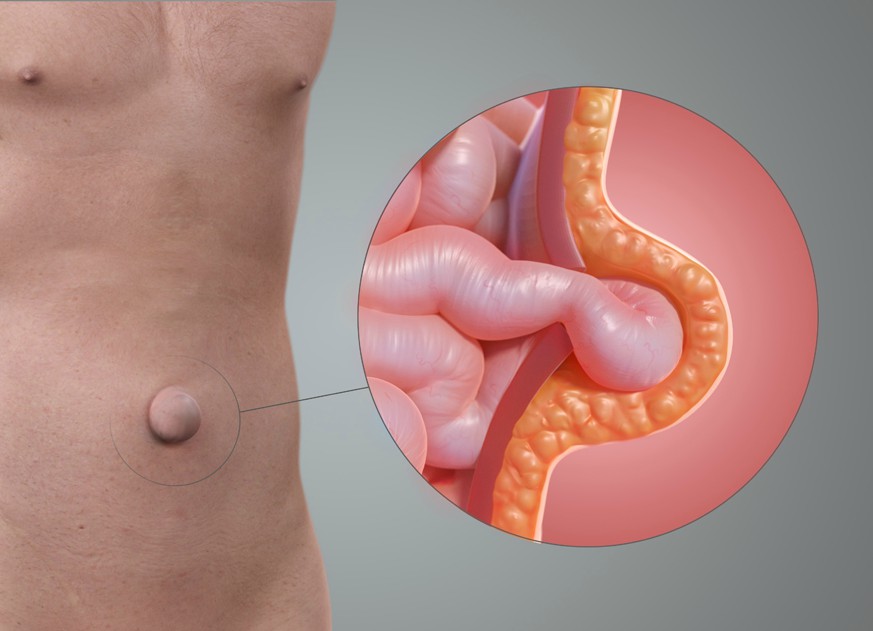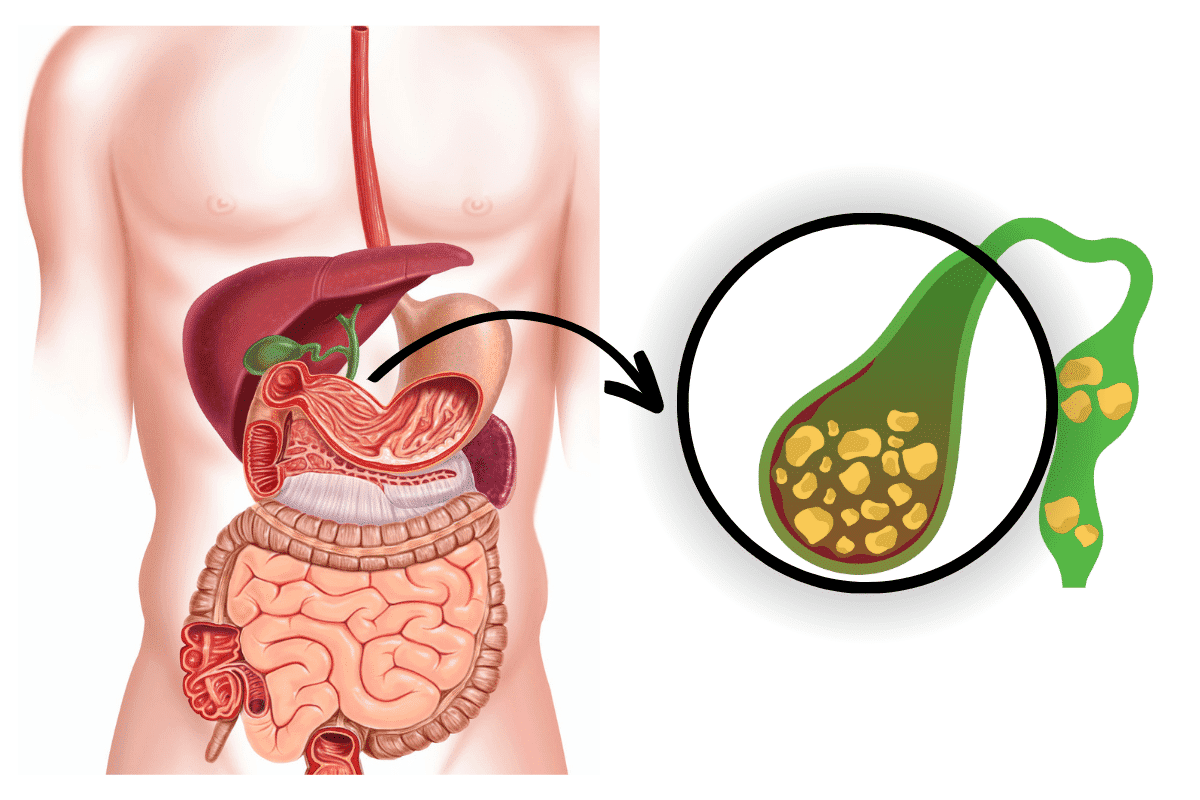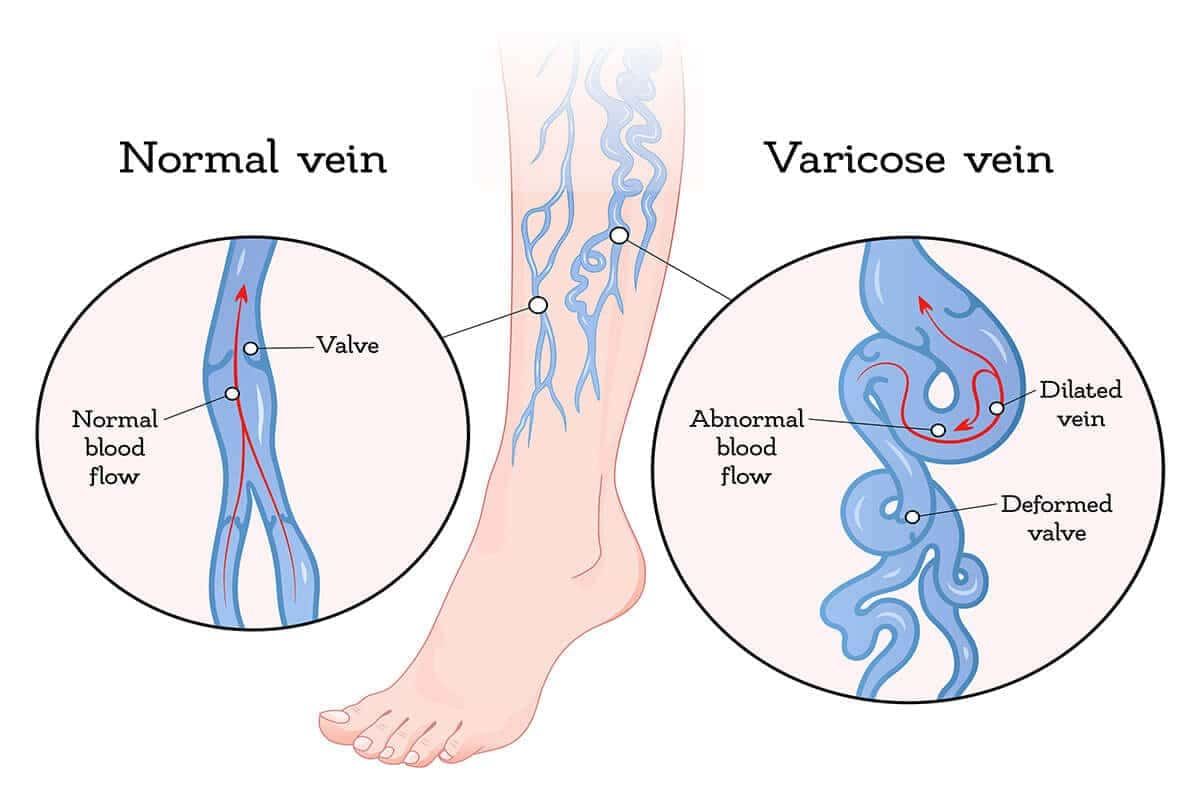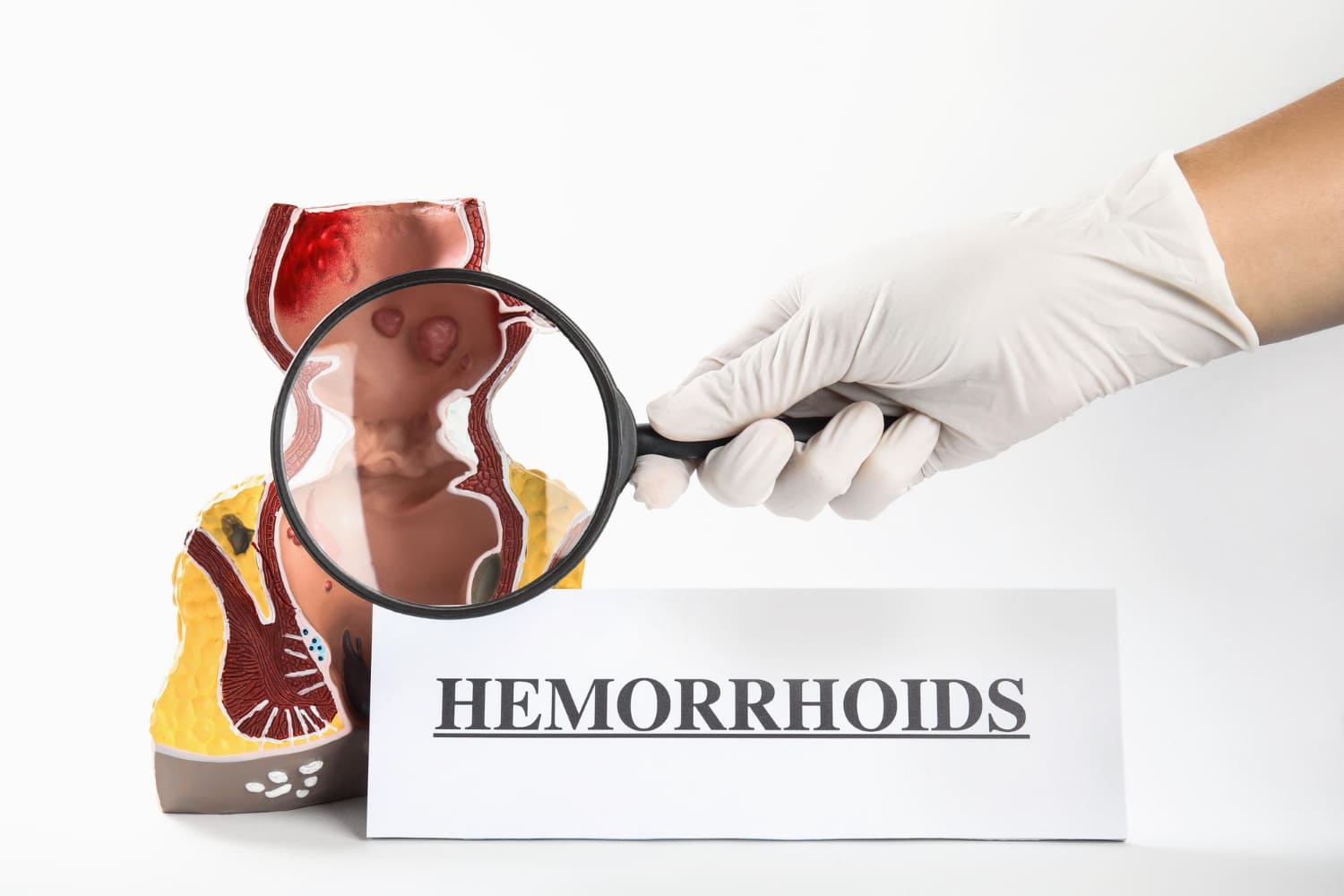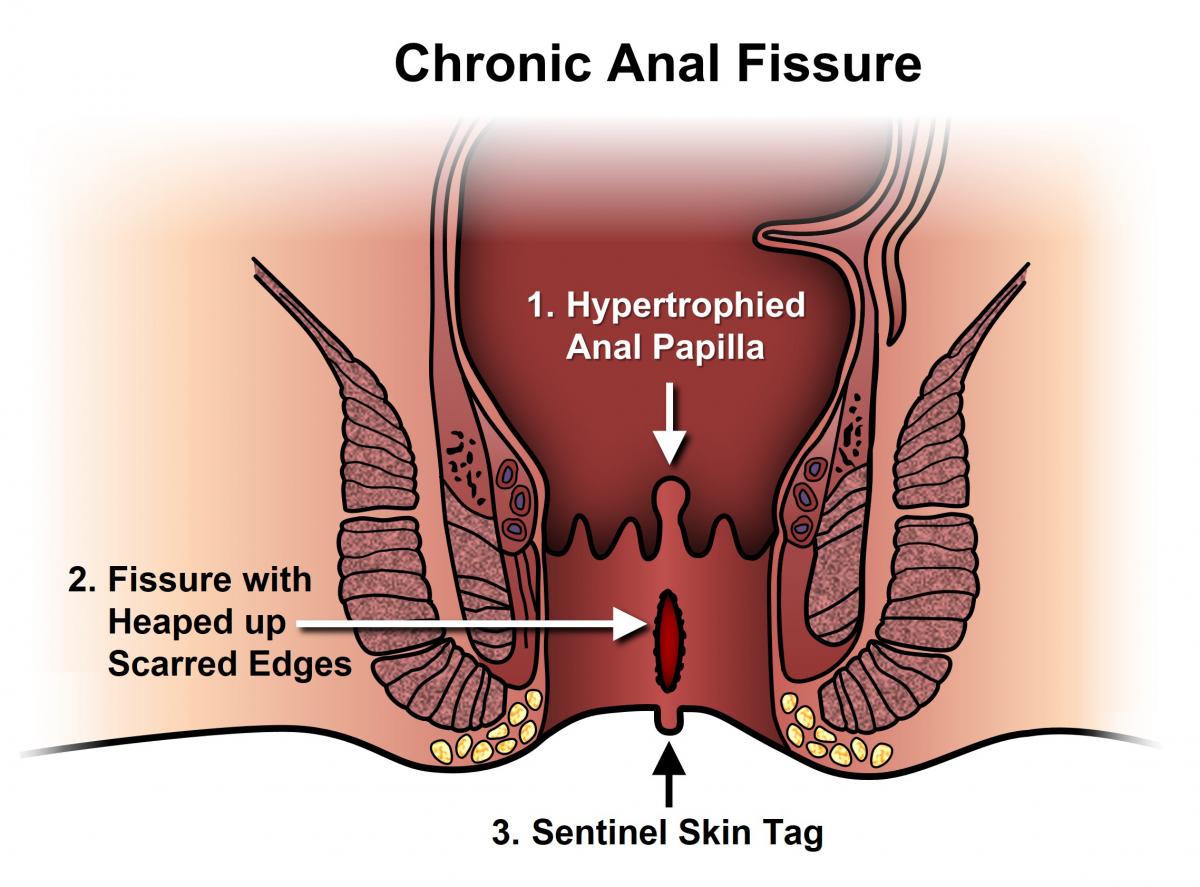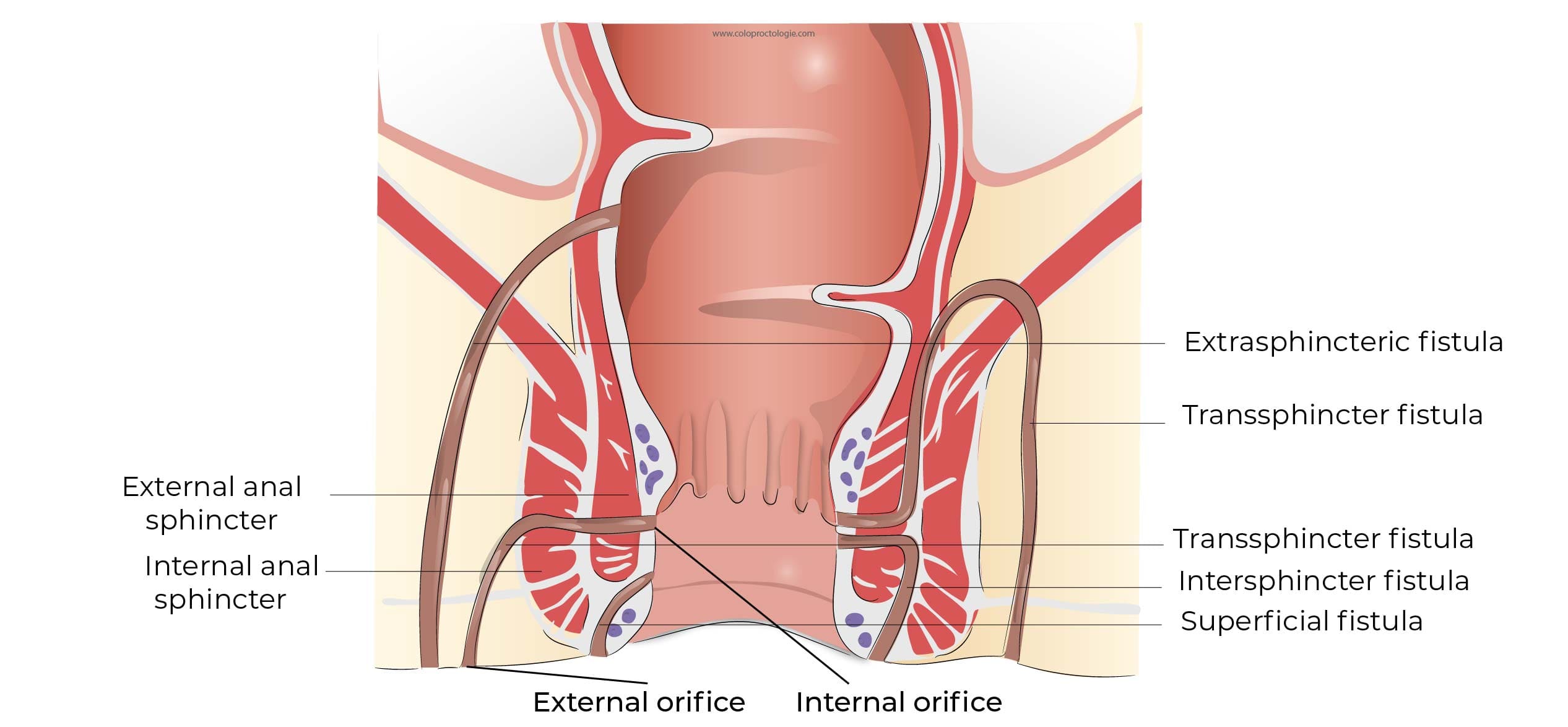
About Hernia & Types of hernia surgery
A hernia occurs when the internal organs, tissues, muscles, or fat pushes through a weak spot in the abdominal muscle wall. Most hernias develop within the abdominal cavity, i.e., between the chest and hips. Hernias usually are not considered dangerous, but they tend to get bigger and lead to life-threatening complications.
It can occur in both males and females. Some common types of hernias are:
- Inguinal Hernia: It is the most common type of hernia that appears in the groin region when a part or section of the intestine or bladder pushes through the abdominal wall or into the inguinal canal. This type of hernia mostly occurs in males.
- Umbilical Hernia: In this type of hernia, the intestine protrudes through the weak abdominal muscles around the navel or belly button. It mostly develops in infants and often resolves within a year or so. Adult males and females can also develop this hernia.
- Hiatal Hernia: A hiatal hernia develops when the opening in the diaphragm, where the esophagus passes through, widens, and the stomach pushes through this opening, creating a bulge in the chest.
- Femoral Hernia: This type of hernia occurs when the internal organs or tissues push through the groin around the femoral artery present in the upper thigh region. A femoral hernia most develops in females.
- Incisional Hernia: Also known as ventral hernia, an incisional hernia develops in the area of a previous surgical incision where the intestine or other organs push through the weak scar tissue in the abdominal wall.
Other types of hernia include epigastric hernia, spigelian hernia, congenital diaphragmatic hernia, perineal hernia, etc. Hernias often cause discomfort, pain, and a visible bulge in the affected area. They can be left untreated initially but need to be monitored properly. However, if the condition progresses, surgical hernia repair is required to prevent complications and alleviate symptoms.
- Ultrasound: This test uses sound waves to create images of internal structures. It helps to determine the size and location of the hernia along with the contents of the hernia sac.
- CT Scan: A computed tomography scan provides detailed cross-sectional images of the affected area to identify the type of hernia, its size, and whether the surrounding structures are affected by it.
- MRI (Magnetic Resonance Imaging): This test provides detailed images of the soft tissues and helps to evaluate the extent of herniation.
Besides these imaging tests, some additional tests, such as pulmonary function tests, cardiac evaluation, ECG/EKG, etc., may also be done to ensure that the patient is in optimal health. The results of these tests and evaluations allow the surgeon to identify the potential risks and complications of surgery and the safest approach for hernia repair.
Management and Treatment Options for Hernia
The various management and treatment options for hernia include the following:
- Watchful Waiting: For small, symptomatic hernias, a “wait and see” approach is recommended, which involves regular monitoring of the bulge to ensure it doesn’t become larger or more problematic. It is preferred in elderly patients with multiple health issues.
- Lifestyle Modifications: Making certain lifestyle changes can also help to manage hernia symptoms, especially hiatal hernias. These may include avoiding large meals, staying upright after eating, etc.
- Medications: The Surgeon may prescribe over-the-counter or prescription medications to alleviate the symptoms associated with hernias, such as acid reflux or heartburn.
- Support Garments: For some individuals, the Surgeon may recommend wearing a hernia truss or support garments to push back the bulging organ in the abdominal cavity. However, it is not a long-term solution, and patients should not use them without consulting a Surgeon .
- Hernia Repair Surgery: Surgical repair for hernia is mostly recommended when the condition is symptomatic and there are significant risks of developing complications. The primary goal of surgery is to push back the protruding organ or tissue into its proper place. In most cases, the abdominal wall is strengthened using a hernia mesh, which also helps to prevent hernia recurrence.
The most suitable method of Laparoscopic Hernia Surgery is determined based on factors such as the type of hernia, its size, symptoms, the patient’s overall health, and the preferred choice of Surgery.
Surgical Techniques for Hernia Repair
There are two types of hernia surgery (hernia surgery name): one is herniorrhaphy (tension repair), and the other is hernioplasty (mesh repair). Herniorrhaphy refers to repairing the abdominal wall without any support. Hernioplasty refers to repairing the wall with the help of hernia mesh which acts as a reinforcement. Nowadays, in most cases, hernioplasty is performed to repair hernias, and this approach is also called tension-free hernia repair.
Surgery on Hernia can be performed using the following techniques:
- Open Hernia Surgery: This is a standard technique for Laparoscopic Hernia Surgery where the surgeon makes an incision in the skin to access the herniated tissues and places them back in the abdominal cavity. Once the repair is done, the surgeon stitches the edges of the healthy tissues together to close the opening in the abdominal wall. A more common approach involves placing a synthetic mesh over the weakened area of the abdominal wall to provide support and prevent recurrence. The mesh is sewn in place or secured with surgical staples.
- Laparoscopic Hernia Surgery: In laparoscopic hernia operations, the surgeon may take a totally extraperitoneal (TEP) or transabdominal preperitoneal (TAPP) approach. In TEP, the hernia is repaired from outside the wall without entering the peritoneal cavity. In the transabdominal approach, the surgeon enters the peritoneal cavity and places a mesh inside to reinforce the abdominal wall. Both these approaches are minimally invasive as only keyhole-sized incisions are created to access the hernia, and a laparoscope is used, which provides live, high-quality video feed of the internal organs. This technique has minimal complications and higher success rates than open hernia surgery.
- Robotic Hernia Surgery: This technique is quite similar to laparoscopic hernia surgery, but instead of performing the surgery directly, the surgeon uses robotic arms for enhanced dexterity and precision. The robotic technique is very helpful in treating hernias in children.
Each surgical approach has its advantages and considerations. The choice of technique depends on the type of hernia, the surgeon’s expertise, and the patient’s preference.
Comparative Analysis of Open, Laparoscopic and Robotic Hernia Surgery
AspectOpen Hernia SurgeryLaparoscopic Hernia SurgeryRobotic Hernia Surgery| Surgical Technique | Traditional approach involving a single large incision | A minimally invasive approach using small incisions and a camera | Utilizes robotic arms controlled by the surgeon |
| Incisions | One large incision | Several small keyhole incisions | Similar to laparoscopic with robot-assisted precision |
| Recovery Time | Longer recovery time due to larger incision and tissue trauma | Shorter recovery time due to smaller incisions and less tissue trauma | Similar to laparoscopic hernia surgery |
| Pain | More postoperative pain due to larger incision and tissue manipulation | Less postoperative pain due to smaller incisions and minimal tissue manipulation | Similar to laparoscopic hernia surgery |
| Hospital Stay | Longer hospital stay | Shorter hospital stay | Similar to laparoscopic hernia surgery |
| Complication Rate | Higher complication rate | Lower complication rate | Similar to laparoscopic hernia surgery |
| Recurrence Rate | Moderate risk of hernia recurrence | Lower risk of hernia recurrence | Similar to laparoscopic hernia surgery |
| Advantages | Widely available and familiar to many surgeons | Minimally invasive, faster recovery, less pain | Enhanced precision and dexterity |
| Disadvantages | Larger incision, longer recovery, higher risk of complications | Requires specialized training, may not be suitable for all patients | Costlier than traditional and laparoscopic methods |
| Patient Preference | Some patients may prefer the traditional approach | Increasingly preferred by patients due to faster recovery and less pain | Less common, but may appeal to patients seeking cutting-edge technology |
| Cost | Moderate cost compared to robotic surgery | Moderate cost compared to robotic surgery | Higher cost compared to open and laparoscopic methods |
Benefits of Laparoscopic Hernia Surgery
Commonly called keyhole surgery, laparoscopic hernia surgery is a minimally invasive procedure that offers several benefits over conventional open hernia surgery. The key benefits include the following:
- Smaller Incisions: The laparoscopic technique requires only 2-3 small incisions, which are less than an inch. Smaller incisions result in less tissue damage, reduced scarring, and better cosmetic outcome.
- Minimal Pain & Blood Loss: Due to the smaller size of incisions and reduced tissue manipulation, patients experience less post-operative pain and bleeding during and after the procedure compared to open surgery.
- Faster Recovery: Laparoscopic hernia surgery generally involves shorter hospital stays and faster Laparoscopic Hernia Surgery Recovery Time as it is minimally invasive. Most patients can resume normal activities within a couple of weeks after a hernia operation.
- Reduced Risk of Infection: The smaller incisions in this technique also reduce the exposure of internal tissues to the external environment and contaminants, thereby lowering the risk of infection significantly.
- Lower Risk of Hernia Recurrence: There is a higher risk of hernia recurrence in open surgery as it may or may not involve using mesh. However, with laparoscopic hernia surgery, a mesh is often used to reinforce the wall, which prevents the organ from protruding again. The small incisions also reduce further trauma to the abdominal wall, which lowers the risk of incisional hernia.
- Shorter Hospital Stay: In most patients, laparoscopic hernia repair surgery is performed on an outpatient basis, which means that an overnight hospital stay is usually not required after the surgery. Thus, the patient can go home on the same day after a few hours of observation.
- Quickly Resume Work & Other Activities: While open hernia surgery makes it difficult for the patient to return to work and perform other activities, laparoscopic repair allows them to resume work and other activities within 1-2 weeks. As there is a reduced risk of tearing the stitches and strain in the treated area, the patient can perform basic activities without worrying about the pain.
- Improved Cosmetic Outcome: Thanks to smaller incisions, the scarring after laparoscopic hernia repair is minimal. Once these scars heal, they also become almost unnoticeable.
While laparoscopic hernia operation is highly beneficial for patients, it should be noted that it may not be suitable for all hernia types and in certain medical conditions.
**Explore and discover real transformation stories with our before and after Hernia treatment images. Take charge of your hernia journey today.
Preparation Before Laparoscopic hernia surgery
The surgeon provides detailed instructions to prepare the patient for a hernia operation. While the instructions can vary based on individual circumstances, some common guidelines the patient may receive include the following:
- The patient needs to get all the recommended tests done before the surgery and keep the reports with them during admission.
- It’s also important for the patient to disclose information about the current medications, including prescription and over-the-counter drugs and supplements. The Surgeon will adjust the medications or suggest temporarily stopping certain medications before surgery.
- The patient needs to avoid eating or drinking anything for a specified period before the surgery to prevent complications during anesthesia administration and surgery.
- The Surgeon will provide an antibacterial soap on the day of surgery to reduce the risk of infection.
- The patient is advised to avoid taking medicines, such as aspirin, ibuprofen, or other blood-thinning medications, as they can increase the risk of excessive bleeding during the surgery.
- Since general anesthesia is used for hernia repair, the patient will not be able to drive back home. He/she will be advised to ask a friend or family member to drive or use other means of transportation.
- The patient is advised to wear loose and comfortable clothes on the day of surgery and avoid wearing jewellery, makeup, and other accessories.
- The Surgeon will also instruct the patient to stop smoking and drinking in the days leading up to the surgery, as they can affect the body’s response to anesthesia and impair healing abilities.
Before proceeding with the surgery, patients are encouraged to ask questions and clarify their doubts so that they have a better understanding of the procedure, risks, benefits, and other aspects of Laparoscopic Hernia Surgery.
Laparoscopic Hernia Surgery Complications & Side Effects
Hernia surgery is usually safe and effective. But like any other surgical procedure, it carries potential risks and complications. The surgeon usually takes the necessary measures to reduce the risks and complications. However, in emergency cases, it may not be possible to mitigate them all.
Some potential complications and side effects of hernia operation include the following:
- Infection: An infection may occur at the surgical site due to poor hygiene or wound care. Signs of infections include increased pain, redness, swelling, warmth, and discharge from the incisions. If any of these symptoms present, it’s advised to contact the Surgeon promptly.
- Bleeding: While bleeding is normal after surgery, in some cases, the patient may experience excessive bleeding during or after the surgery.
- Hematoma & Seroma: Blood accumulation and fluid accumulations are often after surgical procedures. In some cases, they resolve on their own. But in others, drainage may be required to prevent further complications.
- Mesh-related Complications: In some cases, the patient may experience an allergic reaction to the mesh or issues like mesh migration, mesh shrinkage, or adherence to nearby tissues. If such complications arise, the Surgeon may have to remove the mesh.
- Recurrence: Despite successful repair, hernias can sometimes recur, especially if the mesh is not placed for scaffolding. Along with this, Laparoscopic hernia surgery also makes the patient vulnerable to incisional hernia.
Besides all these, there are several other complications, such as adhesion formation due to abnormal healing, chronic pain in the surgical site, wound dehiscence, anesthesia reactions, etc., that may occur after hernia surgery. To prevent these risks, complications, and side effects of anesthesia, the patient needs to follow the pre and post-op instructions strictly for a smooth and successful Laparoscopic Hernia Surgery Recovery Time.
Lifestyle Changes Recommended After Laparoscopic hernia surgery
Hernia patients should understand that after Laparoscopic hernia surgery, they will have to make certain lifestyle changes to contribute to their recovery and prevent complications and recurrence. Individuals will have to take several precautions after hernia surgery for a smooth and successful recovery and follow the tips below:
- For a certain period after hernia surgery (usually 3-4 weeks at least), avoid lifting heavy objects or exercising, as such activities can put undue pressure or strain on the surgical site. The patient is also advised to be very careful lifting heavy objects in the future too, as the integrity of the abdominal muscle wall is already compromised.
- Instead of pushing the body to perform activities, even walking or climbing stairs, allow the body to heal at its own pace and gradually resume activities. If it hurts performing any activity, stop immediately. Pushing the body to its limit during the recovery period can lead to complications, such as tearing of stitches, mesh displacement, etc.
- Though it is a general recommendation, the patient should primarily focus on taking a balanced diet after hernia surgery, which is rich in protein, fiber, vitamins, and minerals to support the healing process. It’s also important to avoid foods that can cause gas or bloating. Also, don’t forget to drink plenty of water throughout the day. It will help to flush out toxins from the body.
- In the long term, the patient will be advised to maintain a stable and healthy weight, as being overweight can increase the risk of developing hernias.
- Avoid straining during bowel movements as it can strain the abdominal area and increase the risk of damaging the repaired hernia. Try to relax or ask the surgeon to prescribe laxatives or stool softeners for easy bowel movements.
- Quit smoking for at least 4 to 6 weeks of recovery, as smoking can impair the healing process by making the blood vessels weak. It can also affect the body’s immune system negatively.
- After the recovery is complete, consult the Surgeon and include muscle strengthening exercises in the routine to improve overall health and prevent hernia recurrence.
- The patient needs to attend all scheduled follow-up consultations with the Surgeon to ensure proper healing, adjust medications, and address other concerns.
One thing to remember is that the recovery will be different for each patient. Therefore, it’ll be best to take personalized recommendations from the Surgeon for optimal healing.


